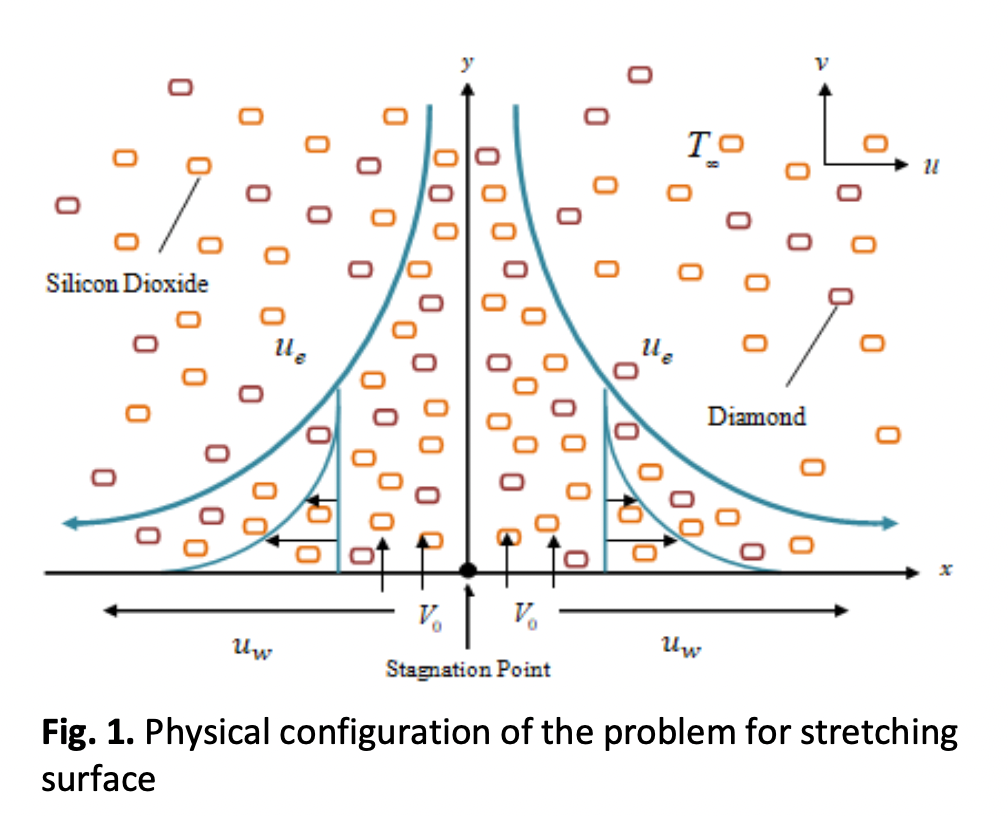Hyperbolic Tangent Fluid Model for Stagnation Flow of Hybrid Nanofluid Over a Stretching Sheet
DOI:
https://doi.org/10.37934/arfmts.107.1.87101Keywords:
Hybrid nanofluid, hyperbolic tangent fluid model, stretching sheet, boundary layer, radiation, stagnation point flowAbstract
The problem of hyperbolic tangent fluid model for stagnation flow of hybrid nanofluid over a stretching sheet is investigated. Constitutive relation of an incompressible hyperbolic tangent model as well as consideration of thermal radiation and Newtonian heating is taken into account. The boundary layer problem is formulated to nonlinear partial differential equations which is then transformed into ordinary differential equations by using similarity transformation. The equations including the boundary conditions are solved numerically using bvp4c in the MATLAB software. A comparison with previous findings shows an excellent agreement. The effect of governing parameters such as power law index, Weissenberg number, suction/injection, radiation and Biot number is investigated. The changes in the value of volume fraction of diamond and silicon dioxide are also analyzed. Characteristics for the significant variables are graphically presented and the numerical results are tabulated. The velocity behavior is significantly influenced by the volume fraction of diamond and silicon dioxide and other physical parameters. Meanwhile, the temperature is influenced by the radiation parameter. This study provides conclusive evidence that increasing the volume fraction of diamond nanoparticles significantly enhances the heat transfer rate. The increment by 0.1 (10%) of the volume fraction of diamond nanoparticles increases the heat transfer rate approximately by 3%. These findings underscore the potential of integrating these nanoparticles to improve thermal performance across diverse applications.
Downloads
































